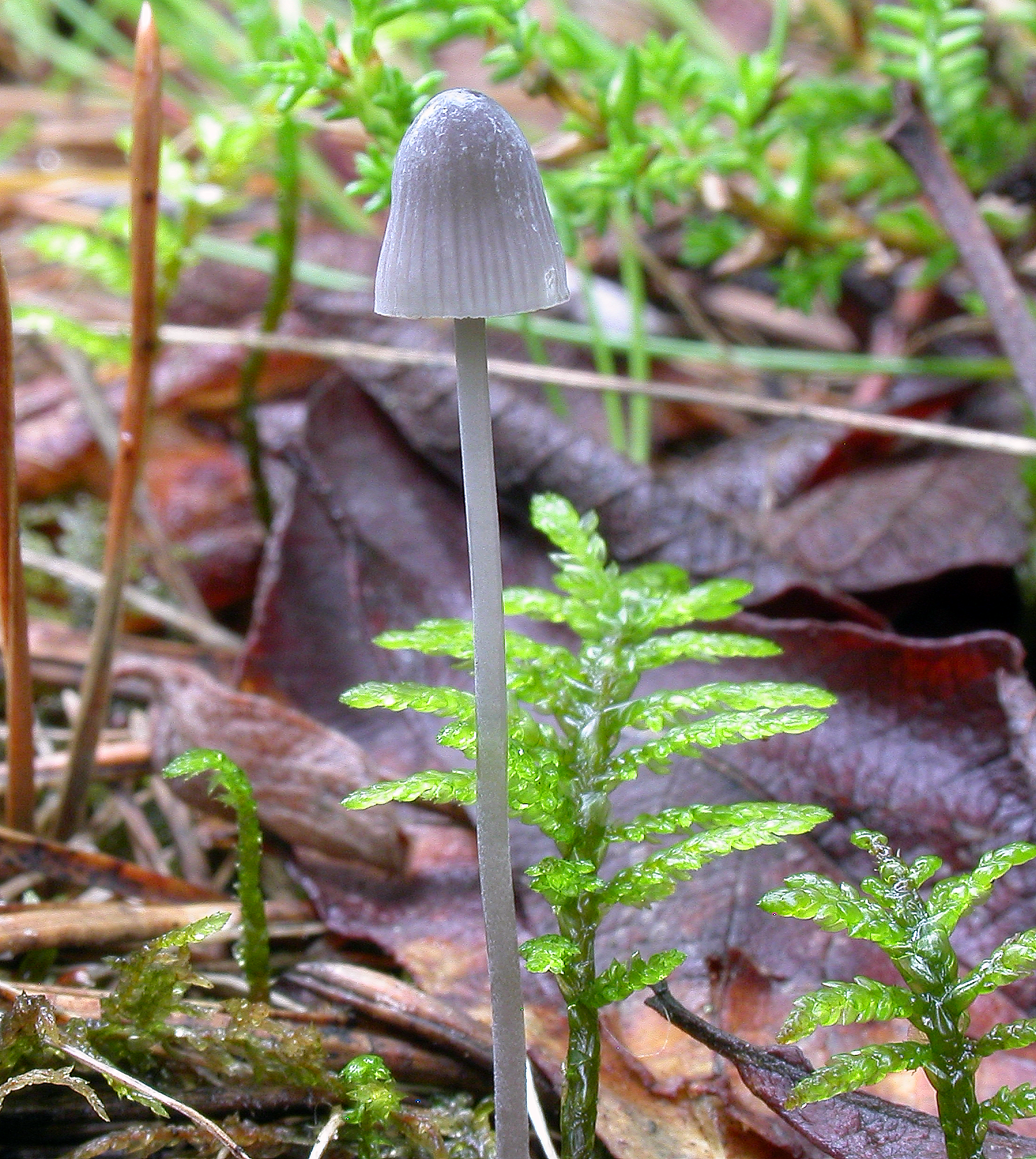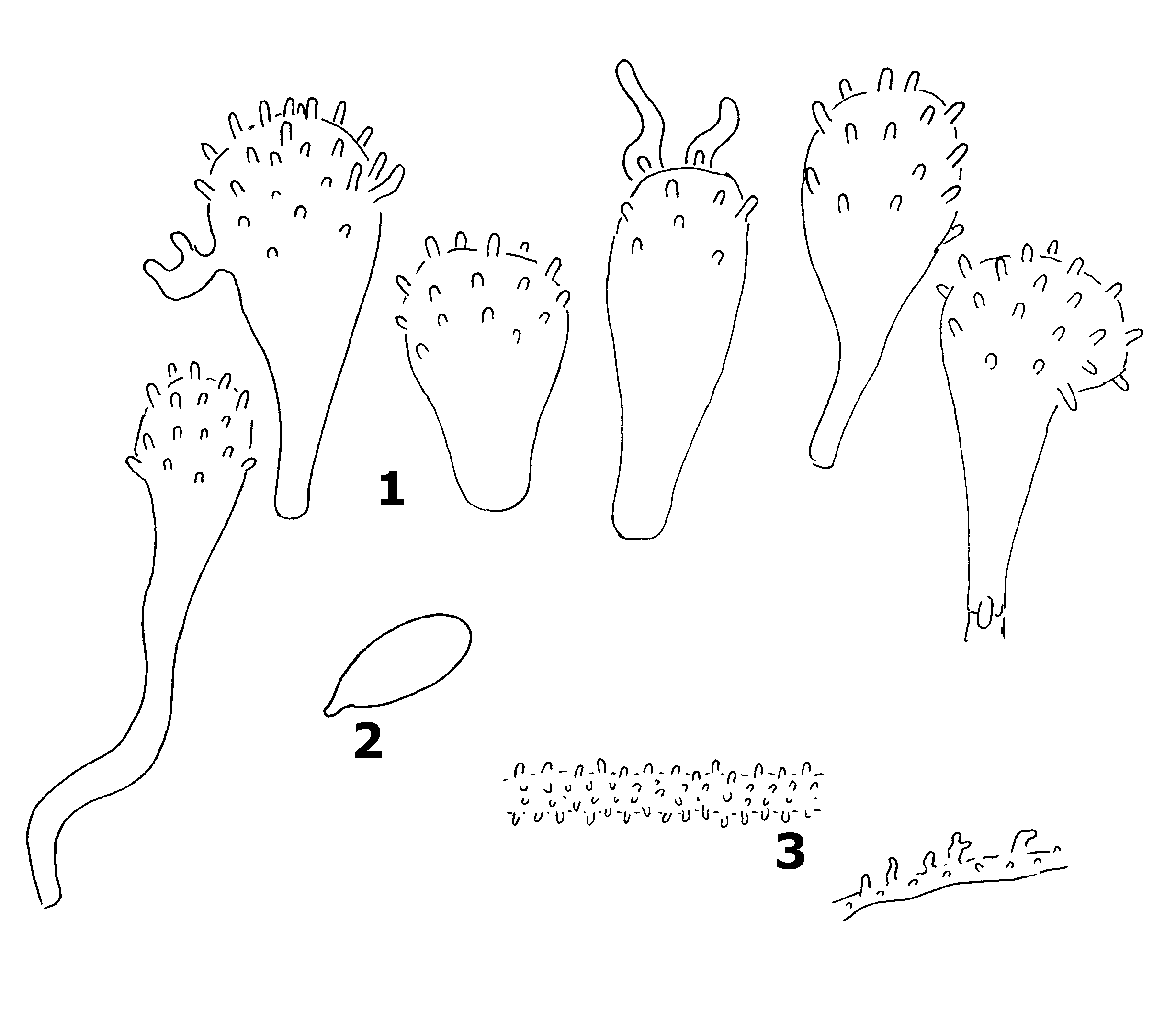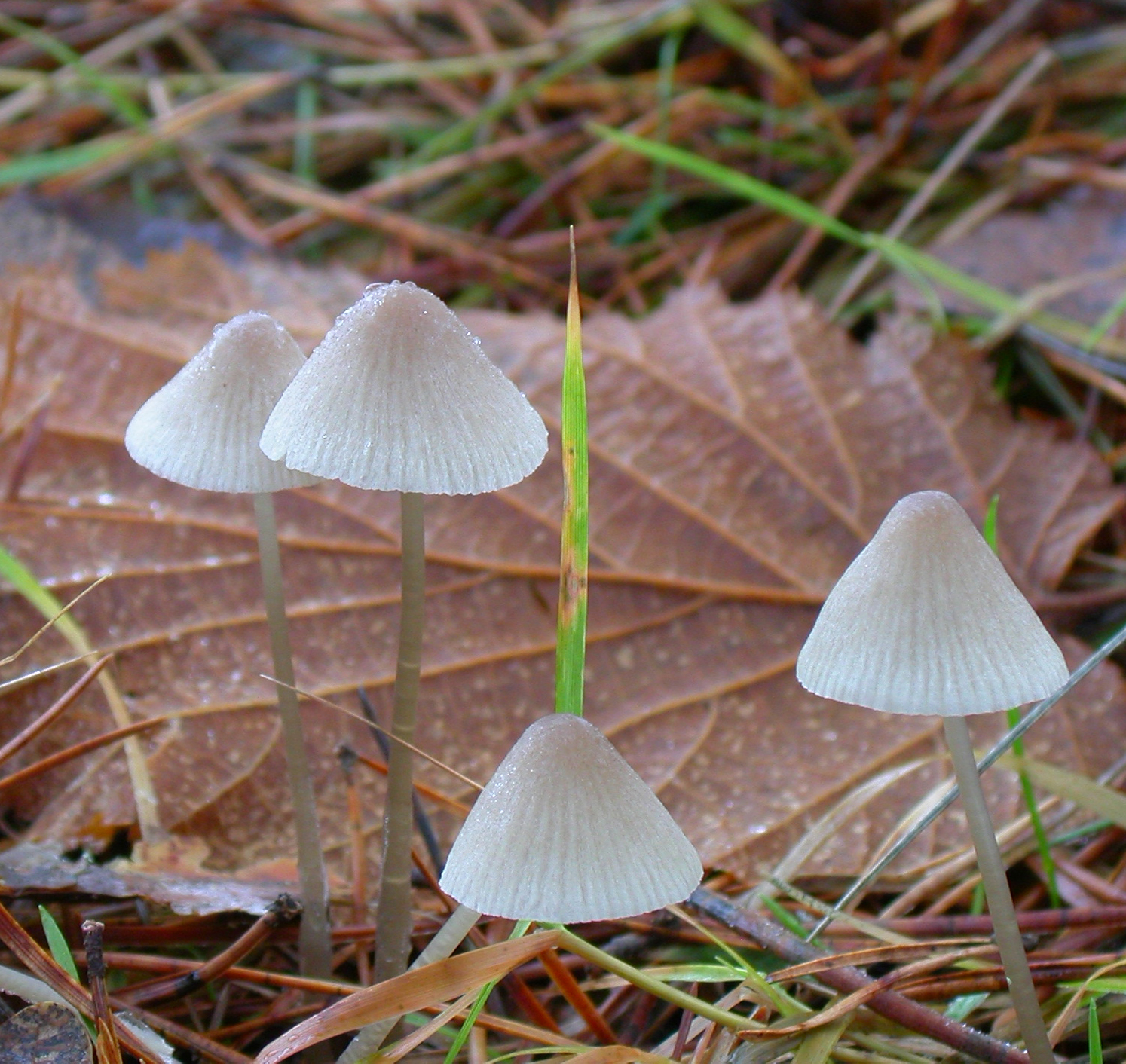Mycena urania
Mycena urania
Description
1. Cheilocystidia, 2. Spores, 3. Hyphae of the pileipellis.
Cap 5-16 mm across, conical to convex, sulcate, translucent-striate, pruinose, glabrescent, at first blackish violet, then bluish grey or greyish with or without a faint violet hue, dark grey at the centre, finally turning grey to grey-brown. Gills 17-20 reaching the stem, adnexed to adnate, not decurrent with a tooth, in young specimens ±violet-blue, then grey to white, occasionally with a brownish flush, edge concolorous or paler. Stem 20-65 x 0.5-1 mm, cylindrical, equal, pruinose, glabrescent except for the apex, lilaceous grey, slate grey to brown-grey, darker towards the base, the base covered with white fibrils. Odour indistinctive. Basidia 23-25 x 7-8 µm, clavate, 4-spored, rarely 2-spored. Spores (4-spored) 7-10.2 x 3.5-5 µm, Q = 1.6-2.5, Qav ˜ 1.9, pip-shaped, amyloid. Cheilocystidia 19-50 x 8.5-25 µm, forming a sterile band, clavate or obpyriform, mostly long-stalked, apically covered with few to numerous warts or straight to curved excrescences 1.5-10 x 1-1.5 µm. Pleurocystidia similar. Lamellar trama dextrinoid. Hyphae of the pileipellis 2-8 µm wide, densely covered with warts or short cylindrical, simple to branched excrescences 2-5 x 0.5-1 µm. Hyphae of the cortical layer of the stem 2-3.5 µm wide, covered with cylindrical excrescences 0.5-2 x 0.5 µm, terminal cells up to 8 µm wide, clavate, densely diverticulate. Clamp connections present at all tissues in 4-spored specimens.
Ecology and distribution
On vegetable debris among mosses or ericaceous plants or under conifers, in mountain Betula forests and in arctic/alpine habitats. Summer to autumn. Recorded in all parts of the country but seems to be rather rare in Norway.


